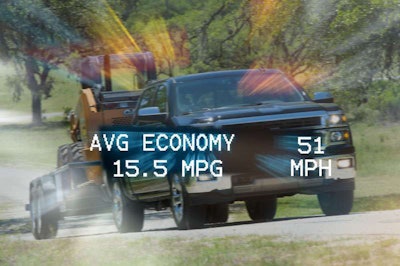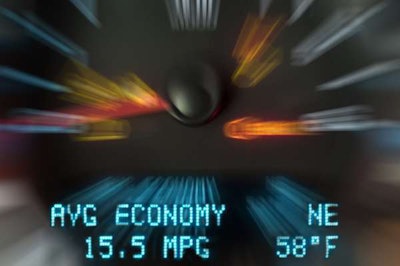Pickup Fuel Mileage: The only constant is it’s always changing
A couple days ago I was scanning through the information screens on my pickup’s dash to check tire pressures and how much engine oil life was remaining. Even though I use a tire gauge and change oil every 4,500 miles, I still like to see what the truck’s computer says.
I happened to scroll to the amount of fuel used screen since the truck was new. Curious, I figured this was an easy way to figure average fuel economy since I’ve drove it off the dealer’s lot.
It wasn’t as high as expected from a 2011 GM 1500 4×4 with the 5.3L V8 that has a 15/17/21 EPA mpg number.
My neighbor has a nearly identical pickup in year, make and model. He swears his averages 18mpg.
So, is there something wrong with my truck or is my neighbor blowing a little mpg smoke? Neither.
Here’s the deal with mpg numbers and EPA ratings: In real-world use the only constant is inconsistency.
There are so many variables that affect fuel economy that the only way to get a fairy accurate number of a vehicle’s true mpg is to do the figuring on an annual basis just as I had done.
Here are just a few of the factors that affect mpg besides the driver:
- Wind
- Humidity
- Air Temperature
- Fuel variations
- Road surface
- Changes in elevation
- Engine wear
- Engine maintenance
- Tire pressures
- Tire tread (type and wear)
- Cargo weight
- Number of passengers
- Change in ride height
- Change in aerodynamic profile
- Speed
When you factor in the above along with the driving habits of the person behind the wheel, it’s easy to see why no two vehicles’ fuel economy numbers are going to really be the same.
 MPG changes second by second, mile by mile, affected by a host of driving condition variables.
MPG changes second by second, mile by mile, affected by a host of driving condition variables.My truck had a winch, bed topper, and all-terrain tires on it, while my neighbor’s truck was bone stock running factory street tires. So even though they were similar trucks, the little differences that affected weight, rolling resistance and aerodynamics played a big role in the mpg numbers.
MPG numbers will also vary month to month, week to week, day to day or even mile by mile unless all of the factors that have an affect on fuel use are remain constant.
That’s why the “instant mpg” number on a vehicle’s driver information readout changes by the second. It’s just a simple truth a vehicle’s fuel economy is affected by so many variables that achieving the mpg numbers shown on the window sticker is an act of futility.
You very well could see those numbers, or even get better mpg numbers. But chances are they’ll be very short lived and over time never be as good as the EPA achieves in their lab testing.
As for how I view my truck’s fuel economy over the past couple years, it is what it is; I like the truck, it serves its purpose well, and I’m comfortable with how I drive.
If fuel economy was the end all, I’d probably be driving a compact diesel-hybrid car.








